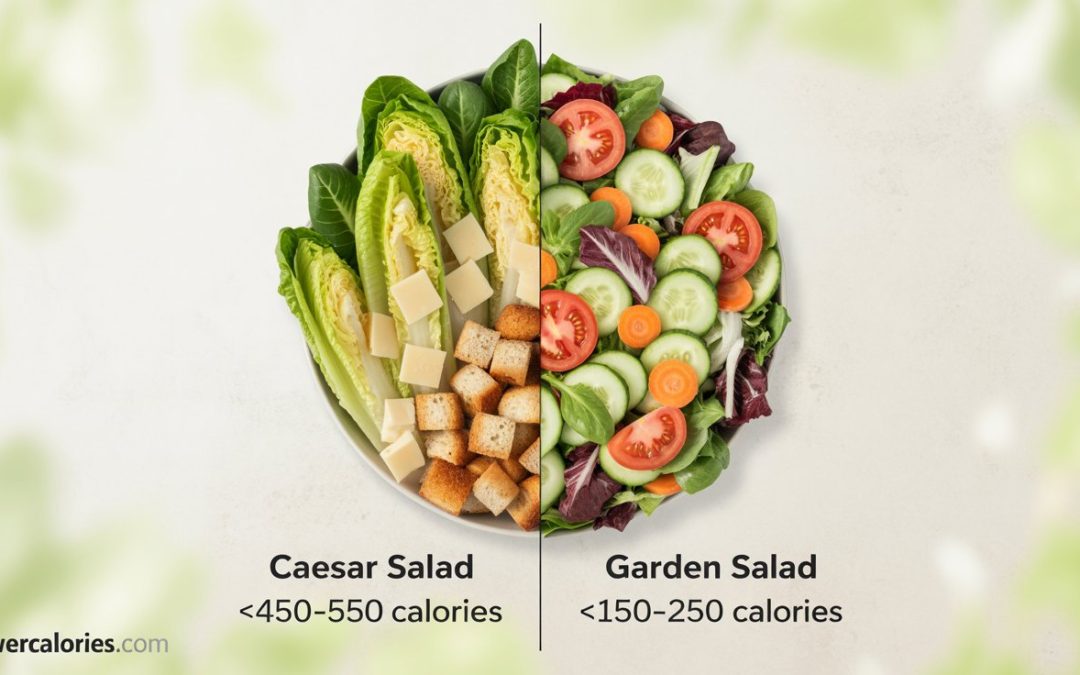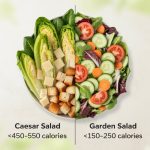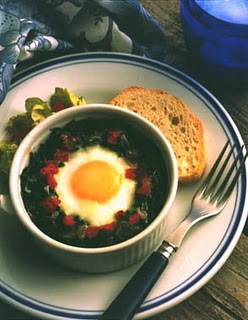Salads seem like the ultimate healthy choice, but appearances can be deceiving. A Caesar salad can be packed with hidden calories, while even a garden salad can turn unhealthy depending on toppings. Let’s take a detailed look at calories with and without dressing, the calorie impact of common salad bar ingredients, and strategies to build a better salad.
Detailed Comparison Table
| Salad Type | Without Dressing (1 serving) | With Typical Dressing (2 Tbsp) |
|---|---|---|
| Caesar Salad | ~220 calories | ~450–550 calories |
| Garden Salad | ~80–120 calories | ~150–250 calories |
Values can vary greatly based on ingredients and serving size.
Calories Without Dressing
Caesar Salad:
Romaine lettuce itself is very low in calories, but croutons add 70–100 calories, and Parmesan cheese adds another ~50. Even before adding dressing, the extras can make a Caesar salad much heavier than expected.
Garden Salad:
Mixed greens are around 20 calories per serving. Fresh veggies like tomatoes, cucumbers, and peppers add another 30–50 calories. It’s typically light before dressing, especially if you skip cheese and heavy toppings.
Calories With Dressing
Caesar Dressing:
Rich and creamy, classic Caesar dressing contains 150–180 calories per 2-tablespoon serving. It’s made with oil, egg yolk, and cheese, nearly doubling the total calorie count when added generously.
Garden Salad Dressings:
Vinaigrettes usually have 80–120 calories per 2 tablespoons, while creamy options like ranch or blue cheese often have 120–150 calories. Even healthy-sounding dressings can significantly raise your salad’s total calories if poured freely.
Hidden High-Calorie Ingredients
These common salad bar items can add surprising calories:
- Croutons: 70–100 calories per handful
- Bacon bits: ~50 calories per tablespoon
- Shredded cheese: 100+ calories per ¼ cup
- Creamy dressings: 120–150 calories per 2 Tbsp
- Candied nuts: 100–150 calories per small handful
- Fried chicken strips: 200–300+ calories
- Pasta or potato salad scoops: 150–250 calories
These items can quickly turn a light salad into a 600–800 calorie meal or more.

Healthier Salad Bar Strategies
Want to keep your salad genuinely healthy? Try these tips:
- Fill your plate with leafy greens: Romaine, spinach, kale, spring mix
- Pile on raw veggies: tomatoes, cucumbers, peppers, carrots, onions
- Add lean protein: grilled chicken, hard-boiled eggs, beans
- Watch dressing portions: ask for it on the side and use 1 tablespoon or less
- Go light on high-calorie toppers: use just a sprinkle of cheese or nuts
- Swap croutons for crunchy seeds or extra veggies for texture
Making It Delicious Without the Calories
- Use fresh herbs and citrus for flavor without extra calories
- Try balsamic vinegar or lemon juice instead of heavy dressings
- Mix your own light vinaigrette with olive oil and vinegar in moderation
- Include satisfying textures by combining crisp greens, juicy tomatoes, and crunchy veggies
Conclusion
Salads can be one of the healthiest meals you can eat—but only if you build them carefully. A Caesar salad, with its croutons, cheese, and creamy dressing, often rivals less healthy meals in total calories. Even a garden salad can become a calorie trap if you load up on high-fat toppings and dressings.
By choosing smart ingredients, watching portions, and being mindful of dressing, you can enjoy a delicious, satisfying, and truly healthy salad that supports your goals.
In summary, if you’re choosing between the two, the garden salad is clearly the healthier and lower-calorie option when you keep toppings and dressing light. It provides a fresh, nutrient-rich base that’s easy to customize without adding too many calories. Caesar salads, on the other hand, typically end up much higher in calories thanks to croutons, cheese, and creamy dressing, making them the heavier choice at the salad bar. Choosing carefully ensures you get a satisfying, truly healthy meal.
© 2025 by fewercalories.com. All rights reserved. No part of this document may be reproduced or transmitted in any form or by any means, electronic, mechanical, photocopying, recording, or otherwise, without the prior written permission of fewercalories.com.






